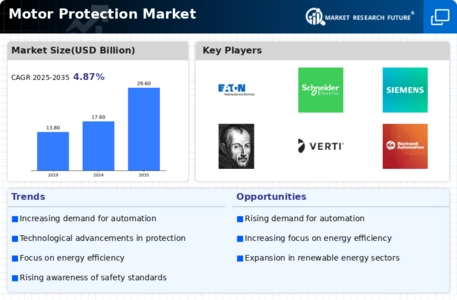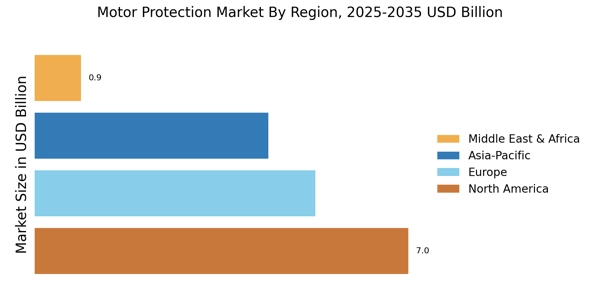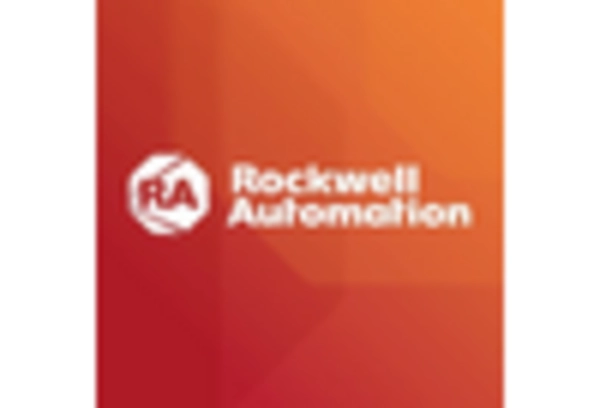Growing Industrial Automation
The growing trend of industrial automation is a significant driver in the Motor Protection Market. As industries increasingly adopt automated processes, the demand for reliable motor protection solutions is on the rise. Automation enhances productivity and efficiency, but it also necessitates robust protection mechanisms to safeguard motors from potential failures. The market for motor protection devices is projected to grow, with estimates indicating a potential increase of 8% annually. This growth is fueled by the need for advanced protection systems that can withstand the rigors of automated environments. Consequently, the Motor Protection Market is likely to benefit from this trend, as manufacturers seek to integrate sophisticated protection solutions into their automated systems.
Rising Demand for Energy Efficiency
The rising demand for energy efficiency is a crucial driver in the Motor Protection Market. As organizations strive to reduce operational costs and minimize their carbon footprint, energy-efficient motors and protection systems are becoming increasingly sought after. The market for energy-efficient motor protection solutions is expected to grow, with projections indicating a potential increase of 12% in the next few years. This trend is particularly pronounced in sectors such as HVAC and manufacturing, where energy consumption is a significant concern. By implementing energy-efficient protection systems, companies can not only comply with environmental regulations but also achieve substantial cost savings. Thus, the Motor Protection Market is poised for growth as energy efficiency becomes a priority for many organizations.
Integration of Advanced Monitoring Systems
The integration of advanced monitoring systems is a pivotal driver in the Motor Protection Market. These systems utilize real-time data analytics to monitor motor performance, thereby enhancing operational efficiency. By employing predictive maintenance strategies, companies can reduce downtime and extend the lifespan of motors. The market for these systems is projected to grow significantly, with estimates suggesting a compound annual growth rate of over 10% in the coming years. This trend indicates a shift towards more proactive maintenance approaches, which are becoming essential in various sectors, including manufacturing and energy. As industries increasingly adopt these technologies, the Motor Protection Market is likely to experience substantial growth, driven by the demand for enhanced reliability and performance.
Regulatory Compliance and Safety Standards
Regulatory compliance and safety standards are increasingly influencing the Motor Protection Market. Governments and regulatory bodies are implementing stringent safety regulations to ensure the safe operation of electrical motors. Compliance with these standards not only protects workers but also minimizes the risk of equipment failure. The market is witnessing a surge in demand for protective devices that meet these regulations, such as overload relays and thermal protection systems. This trend is particularly evident in sectors like oil and gas, where safety is paramount. As industries strive to adhere to these regulations, the Motor Protection Market is expected to expand, driven by the need for compliant and reliable motor protection solutions.
Technological Advancements in Protection Devices
Technological advancements in protection devices are reshaping the Motor Protection Market. Innovations such as smart relays and digital protection systems are enhancing the capabilities of motor protection solutions. These advancements allow for more precise monitoring and control of motor operations, reducing the risk of failures. The market for these advanced protection devices is anticipated to grow, with estimates suggesting a compound annual growth rate of around 9% over the next few years. As industries increasingly recognize the benefits of these technologies, the demand for sophisticated motor protection solutions is likely to rise. Consequently, the Motor Protection Market stands to gain from the ongoing technological evolution, as manufacturers seek to implement cutting-edge protection systems.


















Leave a Comment